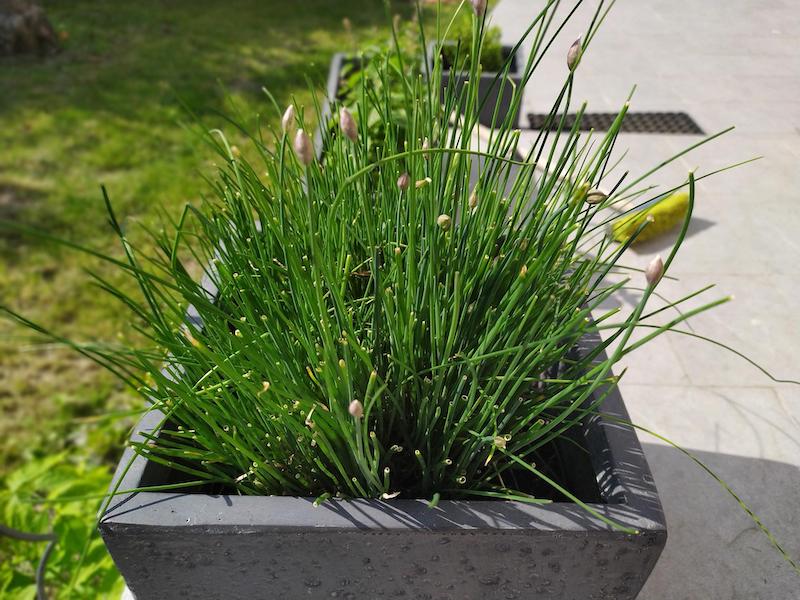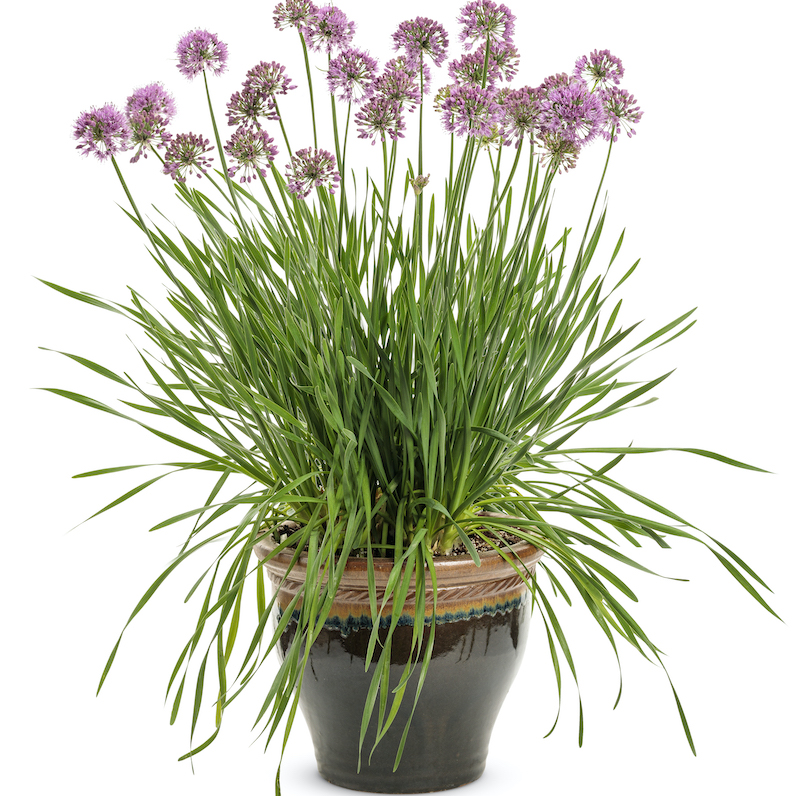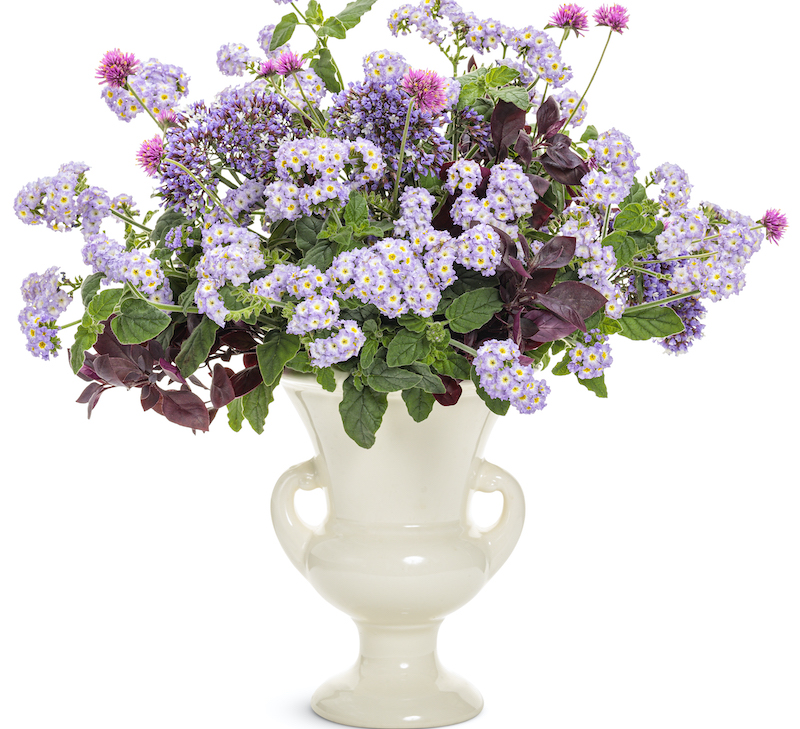Ornamental alliums can be a great addition to a container of mixed seasonal plantings. There are many cultivars that are short enough and compatible to grow alongside a wide range of annuals or even some smaller perennials. A large container planted with a succession of bulbs from early spring to summer would be a stunning and easy decoration for a sunny front door, patio or deck.

Planting Alliums in Pots
Alliums are easy to plant in pots. Typically, they are sold in bulb form and need to be planted in the fall with other spring bulbs. All varieties prefer a spot in full sun. Shade that is early in the day or late in the afternoon will be acceptable as long as the full sun exposure is 6 or more hours.
Containers need to have excellent drainage and should be made from durable material that will tolerate your hardiness zone conditions in the winter. Terracotta and glazed ceramic pots may not survive a winter in zone 4 as well as in a frost-free zone. Including several companion plants will help to disguise any tatty foliage after the allium blooms have died back, since their period of blooming is much shorter than an annual or most perennials.

Best Soil For Alliums in Pots
Potting soil needs to be lightweight and free draining. Most premixed all-purpose potting soils are suitable. There is no need to add extra amendments like manure or compost. That can make the soil too fertile and high in nitrogen and will interfere with blooming of bulbs. Fertilizing is best done at strategic times for potted alliums.
Caring For Alliums in Planters
All plants growing in pots rely on the gardener to manage their water, food, and winter needs. The following three sections will explain how to meet these needs for potted alliums.
Watering Alliums in Pots
Potted plants will need to be watered on a much more regular schedule than plants grown in the ground. The soil in pots will dry out from all sides, not just the top. The size of the container contributes to the rate at which the plants will dry out. Smaller containers dry out much faster than large pots or planters.
Always water early in the day, if possible. If you notice the pot is thirsty in the afternoon, water immediately. During hot or dry periods, the containers should be checked for dryness every day. Water the pot long enough to see water coming out of the drainage holes. This will let you know that all of the soil is evenly saturated.
Fertilizing Alliums in Pots
Containerized plants will need fertilizing throughout the growing season. As the pots are watered, nutrients get leached out and need to be replaced. The easiest fertilizer is a diluted liquid feed applied every 3-4 weeks from the time of planting to the first week of August. All feeding of potted plants needs to end by late summer in order for the plant to start hardening off and preparing for dormancy.
Use a formulation for blooming plants that has a higher P (phosphorous) number. Using a liquid seaweed or fish emulsion product will provide the nutrients at a low enough rate that excess salts will not accumulate in the soil.
Winter Care For Alliums in Pots
Ornamental alliums are very cold hardy and will survive overwintering in a container easily. Make sure that the drainage remains excellent through the winter and the pot is not sitting in water or under a downspout. Cold, waterlogged soil is the enemy of any bulb and will cause rot. Pots can either be moved to a more sheltered spot or can be raised up on bricks or ‘pot feet’ to aid drainage.
The container needs to be able to withstand freezing and thawing without cracking or breaking if you garden in a cold hardiness zone. Alliums rarely need to be brought into an unheated garage or greenhouse for the winter. The bulbs need a period of cold for their dormancy.
Growing Alliums Indoors
Ornamental alliums as a rule do not make good houseplants. They need the cold temperatures of winter to go dormant and prepare for the next spring. Edible alliums such as chives can be brought inside to be used through the winter. Make sure to keep the pot evenly watered. Let the top 2-3 inches of soil dry out in between waterings.
Chives will need as bright a spot as you can give them in the house. Light levels between indoors and outdoors are very different. A shadier spot outside can be the equivalent of the sunniest window sill you have. Use grow lights if you don't have a sunny enough spot.

 |
Author Robbin Small - Published 7-19-2022 |
